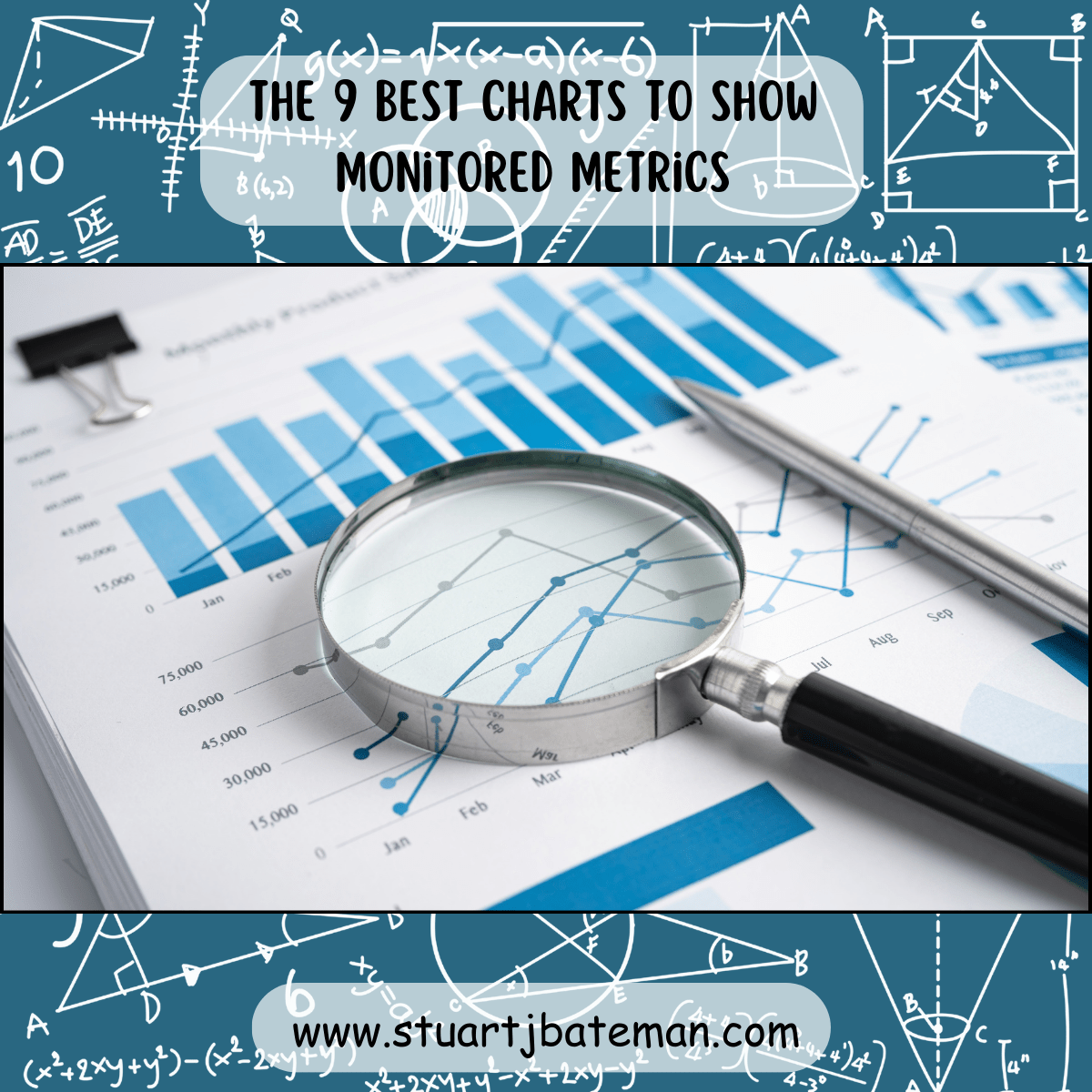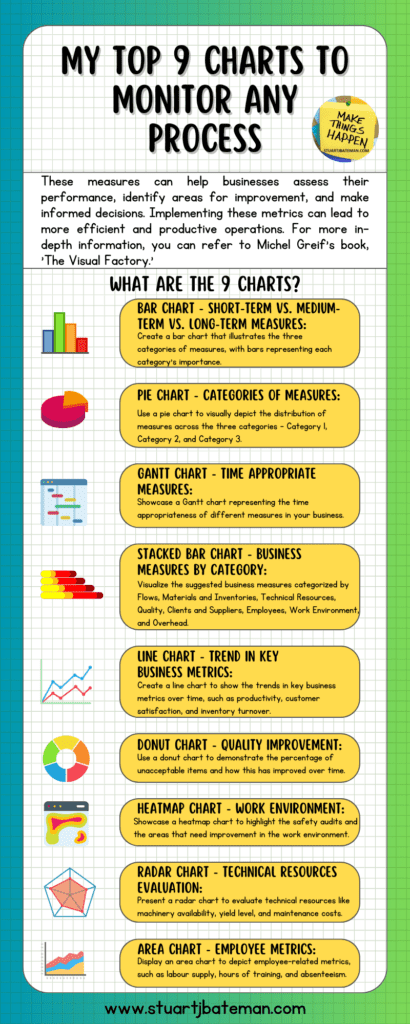The 9 Best charts to show monitored metrics
Opportunities only become options when they fall within your control. – The Mind of a Fox

Introduction to monitoring metrics
Are you monitoring a process? But cannot think of the metrics that are important to your business to report on? Can’t find the right charts to display or develop actionable tasks?
Below I list the measures that Michel Greif outlines in his book ‘The Visual Factory’, which have helped me to develop several spreadsheets that managers use in my company to report back and drive change with. So for your benefit I list them here, but for more information then search for the book on Google.
Relevant and distant measures
Measures should be time appropriate
Category 1 – measures can be influenced in the short term and a short-term expectation is appropriate.
Examples are scrap, flow distance, WIP turns, changeover time, unsafe acts, capability index, skills mastered.
Category 2 – take longer to respond.
Examples are throughput, raw materials, and finished goods turns, delivery performance, labour productivity, OEE and employee satisfactory.
Category 3 – measures require longer-term interpretation, not short term rewards or punishment.
Examples are market share, customer retention, share price, new products launched.
These are the responsibilities of senior management.
Below are the suggested measures to look at within a business.
- Flow Metrics
- Avg production lead time and variance
- Productivity
- Fulfilment of commitments (deadlines, quantities)
- Volume of semi – finished items
- Flow profile: continuity, regularity, throughput time
- Materials and Inventories metrics
- Monitoring of unavailable items in warehouses (materials or finished products)
- Quantity of material needed to build one unit of good product
- Inventory volume and turnover
- Warehouse management performance (response time, accuracy of inventories)
- Technical resources metrics
- Availability of machinery
- Yield level (output quantity divided by input quantity)
- Breakdown rates, or production time without problems
- Time needed for changing production runs
- Maintenance costs in relation to production units
- Percentages of preventive/ remedial maintenance
- Number and duration of technical assistance calls
- Avg length of repair periods
- Quality metrics
- Percentages of unacceptable items
- Rejection and retouching rates
- Results of quality audits
- Total cost of not meeting quality standards
- Period of operation without major problems
- Clients and Suppliers metrics
- Sales volume
- Delivery time
- Customer satisfaction indicators: quality, service, number of problems
- Employees metrics
- Labour supply
- Number of suggestions (proposed, implemented)
- Hours of training
- Level of skill diversity within the teams
- Absenteeism
- Work environment metrics
- Housekeeping indicator
- Safety audits
- Works accidents
- Overhead metrics
- Monitoring of team’s costs
- Power, oil, small tools etc..
- Misc metrics
- Number of products covered by quality assurance
- Number of automatic devices installed on equipment
- Number of quality circles
- Number of machines monitored with SPC
- Distribution of occupied space
- Level of standardisation of components




What are your thoughts? Have I covered everything or is there more you know and would like to share?
I’m always learning and improving this site and my blogs, so please feel free to get in touch with me via LinkedIn or this site to discuss any topics I have covered.
If you’re having trouble finding ways to progress check out these sites filled with free learning tools:

